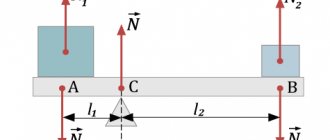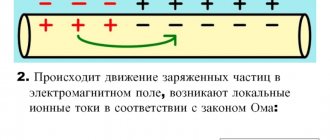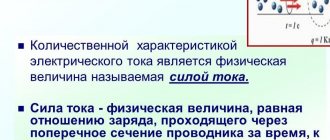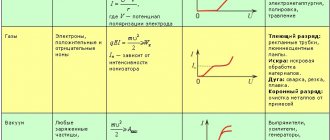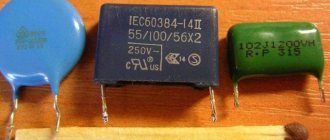The number of repetitions of any events or their occurrence in one timer unit is called frequency. This physical quantity is measured in hertz – Hz (Hz). It is denoted by the letters ν, f, F, and is the ratio of the number of repeating events to the period of time during which they occurred.
When an object rotates around its center, we can talk about such a physical quantity as rotation frequency, the formula:
Where:
- N – number of revolutions around an axis or in a circle,
- t is the time during which they were completed.
In the SI system it is denoted as – s-1 (s-1) and is referred to as revolutions per second (rps). Other units of rotation are also used. When describing the rotation of planets around the Sun, they speak of revolutions in hours. Jupiter rotates once every 9.92 hours, while the Earth and Moon rotate every 24 hours.
Angle of rotation
In all equations of rotational motion, angles are specified in radians, abbreviated as rad.
If ? is the angular displacement in radians, s is the length of the arc enclosed between the sides of the angle of rotation, r is the radius, then by definition of radian
Relationship between angle units
Please note: The name of the unit radian (rad) is usually indicated in formulas only in cases where it can be confused with a degree. Since a radian is equal to the ratio of the lengths of two segments (1rad = 1m/1m = 1), it has no dimension.
The relationship between angular velocity, angular displacement and time for all types of circular motion is clearly visible on the graph of angular velocity (dependence of δ on t). Therefore, the graph can determine what angular velocity a body has at a given moment in time and at what angle it has turned since the beginning of its movement (it is characterized by the area under the curve).
In addition, to present the relationships between these quantities, use a graph of angular displacement (dependence of δ on t) and a graph of angular acceleration (dependence of δ on t).
Speed
A characteristic of all types of rotation is the number of revolutions n or an equivalent characteristic - frequency f. Both quantities characterize the number of revolutions per unit time.
SI unit of frequency (or number of revolutions)
In engineering, the number of revolutions is usually measured in revolutions per minute (rpm) = 1/min.
Thus, the reciprocal of the number of revolutions is the duration of one revolution.
If n is the number of revolutions, f is the frequency, T is the duration of one revolution, period, ? — angular displacement, N — total number of revolutions, t — time, duration of rotation, ? is the angular frequency, then
Period
Angular movement
The angular movement is equal to the product of the total number of revolutions by 2?:
Angular velocity
From the formula for one revolution it follows:
Please note: • the formulas are valid for all types of rotational motion - both for uniform motion and for accelerated motion. These can include constant values, average values, start and end values, and any instantaneous values. • contrary to its name, the number of revolutions n is not a number, but a physical quantity. • a distinction must be made between the number of revolutions n and the total number of revolutions N.
Cyclic speed (reversal)
A scalar quantity that measures the frequency of rotational motion is called cyclic speed. This is the angular frequency, which is not equal to the angular velocity vector itself, but to its magnitude. It is also called radial or circular frequency.
Cyclic rotation frequency is the number of body revolutions in 2*π seconds.
For AC electric motors, this frequency is asynchronous. Their rotor speed lags behind the rotation speed of the stator magnetic field. The value that determines this lag is called slip - S. During the sliding process, the shaft rotates because an electric current arises in the rotor. Slip is permissible up to a certain value, exceeding which leads to overheating of the asynchronous machine, and its windings may burn out.
The design of this type of motor differs from the design of DC machines, where a current-carrying frame rotates in the field of permanent magnets. The armature contained a large number of frames, and many electromagnets formed the basis of the stator. In three-phase AC machines the opposite is true.
When an asynchronous motor operates, the stator has a rotating magnetic field. It always depends on the parameters:
- mains frequency;
- number of pole pairs.
The rotation speed of the rotor is in direct relation to the speed of the stator magnetic field. The field is created by three windings, which are located at an angle of 120 degrees relative to each other.
Read also: Eberspächer battery won’t start
Uniform movement of a body in a circle
A body is said to move uniformly in a circle if its angular velocity is constant, i.e. the body rotates through the same angle at equal intervals of time.
? — angular velocity (constant during time t) ? — angular displacement t — time to rotate through an angle ?
Since the area of the rectangle on the angular velocity graph corresponds to the angular displacement, we have:
or
Constant angular velocity is the ratio of angular displacement (angle of rotation) to the time spent on this movement.
SI unit of angular velocity:
Angular velocity and optical data storage
Disks in a hard disk drive (hard disk drive) spin at speeds ranging from 4,200 rpm on low-power portable devices to 15,000 rpm on high-performance servers
When data is written to optical media such as compact discs (CDs), the drive also uses angular and linear speeds to measure the speed at which the data is written and read. There are several ways to record data, which use variable or constant linear or angular velocity. For example, constant linear speed
(in English - Constant Linear Velocity or CVL) is one of the main methods of recording discs, in which data is written at the same speed over the entire surface of the disc.
When recording in Zone Constant Linear Velocity
(ZCLV) mode, a constant speed is maintained while recording on a specific part, that is, a zone of the disc.
In this case, the disc spins slower when recording on the outer zones. Constant Angular Velocity
mode allows you to record with a gradual increase in angular velocity until it reaches a certain threshold.
After this, the angular velocity becomes constant. The last recording mode is Velocity
(CAV) mode. In this mode, the same angular velocity is maintained over the entire surface of the disc during recording. In this case, the linear speed increases as the recording head moves further and further towards the edge of the disk. This mode is also used when recording records and computer hard drives.
Uniformly accelerated motion in a circle without initial angular velocity
The body begins to move from a state of rest, and its angular velocity uniformly increases.
? — instantaneous angular velocity of the body at time t? — angular acceleration, constant during time t? - angular displacement of the body during time t, (? in radians) t - time
Since on the velocity graph the angular displacement is equal to the area of the triangle, we have:
Or
Since the rotation of the body begins from a state of rest, the change in angular velocity ?? equal to the angular velocity ? achieved as a result of acceleration. Therefore, the formula takes the following form:
or
How to change the engine speed?
You can change the speed of the rotating moment of the equipment mechanism in various ways, for example, mechanical gearboxes with gear shifts, clutches and other devices. But this is not always possible. In practice, 7 methods are used to correct the rotation speed of variable speed drives. All methods are divided into two main directions.
- Correction of the magnetic field by influencing the frequency of the current, reducing or increasing the number of pole pairs, voltage correction. The direction is typical for motors with a squirrel-cage (SC) rotor.
- Slip is corrected by supply voltage, adding another resistor to the rotor circuit circuit, installing dual supply, or using a cascade of valves. This direction is used for rotors with phases.
Adjusting frequency and voltage using a frequency converter, by creating an additional coil with switching poles of pairs, are the most popular methods.
Uniformly accelerated motion in a circle with an initial angular velocity
The initial velocity of the body, equal to ?0 at the moment t = 0, changes uniformly by the amount ??. (The angular acceleration is constant.)
?0—initial angular velocity? — final angular velocity ? — angular displacement of the body during time t in radians t — time ? — angular acceleration is constant during time t
Since on the velocity graph the angular displacement corresponds to the area of the trapezoid under the velocity curve, we have:
Since the area of a trapezoid is equal to the sum of the areas of the triangle and rectangle forming it, we obtain:
where
Further from the speed graph it follows
Combining the formulas we get
After the transformation we get an expression that does not contain time:
Instantaneous angular velocity
The full angle of rotation of the body at any time can be determined from the graph of the angular displacement. The steeper the graph, the greater the instantaneous angular velocity at a given time.
? is the angle between the tangent and the time axis t? — instantaneous angular velocity ? — angular displacement at time t
or
The instantaneous angular velocity is the first derivative of the function? = ?(t) in time.
Please note: 1) to calculate the instantaneous angular velocity ?, it is necessary to know the dependence of the angular displacement on time. 2) the formula for angular displacement for uniform motion of a body in a circle and the formula for angular displacement for uniformly accelerated motion in a circle without initial angular velocity are special cases of formula (2), respectively for ? = 0 and ? = const.
From the formulas it follows:
Integrating both sides of the expression, we get
Angular displacement is the time integral of the angular velocity.
Please note: To calculate the angular displacement ? it is necessary to know the dependence of angular velocity on time.
Speed concept
When we compare the movement of any bodies, we say that some bodies move faster, while others move slower. We use such simple terminology in everyday life, talking, for example, about traffic. In physics, the speed of movement of bodies is characterized by a certain value. This quantity is called speed. General definition of speed (if the body is moving uniformly):
Velocity during uniform motion of a body is a physical quantity that shows how far the body has traveled per unit time.
By uniform motion of a body it is meant that the speed of the body is constant. The formula for finding speed: $v=frac$, $s$ is the path traveled by the body (that is, the length of the line), $t$ is the time (that is, the period of time during which the path was traveled).
According to the international SI system, the unit of linear speed is derived from two basic units - the meter and the second, that is, it is measured in meters per second (m/s). This means that the unit of speed is the speed of such uniform motion that a body travels a distance of one meter in one second.
Try asking your teachers for help
Speed is also often measured in km/h, km/s, cm/s.
Let's look at a simple example of a speed calculation problem.
Task. Moving uniformly, the train covers 219 km in 4 hours. Find its speed of movement.
Solution. $v=frac<219 km><4 h>=54.75frac<km><h>$. Let's convert kilometers into meters and hours into seconds: $54.75frac<km><h>=frac<54750 m><3600c>approx 15.2frac<m>$.
From the example we see that the numerical value of the speed differs depending on the selected unit of measurement.
In addition to the numerical value, speed has a direction. The numerical value of a quantity in physics is called the modulus. When a physical quantity also has a direction, then this quantity is called a vector quantity. That is, speed is a vector physical quantity.
In writing, the velocity module is denoted by $v$, and the velocity vector by $vec v$.
In turn, such quantities as path, time, length and others are characterized only by a numerical value. Then they say that these are scalar physical quantities.
Read also: Daytime running lamp Skoda Octavia A5
Ask a question to the experts and get an answer within 15 minutes!
In the case when the movement is uneven, the concept of average speed is used. Average speed formula: $v_<aver>=frac$, where $s$ is the entire path traveled by the body, $t$ is the entire time of movement. Let's look at an example of a medium speed problem to understand the difference.
Task. Some vehicles cover a distance of 213 km in 2.5 hours. Find it $v_<av>$.
Answer. $85.2 frac<km><h>$ or $23.7frac<m> <s>$.
Rotational movement of the body, formulas
| During the rotational motion of a rigid body, all elements of its mass that do not lie on the axis of rotation move in a circle. Similarly, a material point located at a distance r > 0 from the axis of rotation also moves in a circle, like any body sufficiently distant from the axis of rotation. Linear displacement Sl, linear speed uL and linear acceleration al during such movement are interconnected by the usual relations for translational motion. |
In addition, these quantities are related in a certain way to the angular displacement ?, angular velocity ? and angular acceleration ?.
| Sl | moving a body along a trajectory, | meter |
| Ul | body speed when moving along a trajectory, | meter/second |
| al | acceleration of a given body when moving along a trajectory, | meter/second2 |
| r | trajectory radius, | meter |
| d | trajectory diameter, | meter |
| ? | angular movement of the body, | radian |
| ? | angular velocity of the body, | radian/second |
| ? | angular acceleration of the body, | radian/second2 |
| f | frequency, | Hertz |
Note: The formulas are valid for constant, instantaneous and average quantities, in all cases of body motion in a circle.
Transition from angular to linear velocity
There is a difference between the linear velocity of a point and the angular velocity. When comparing the quantities in the expressions describing the rules of rotation, you can see the commonality between these two concepts. Any point B belonging to a circle with radius R makes a path equal to 2*π*R. At the same time, it makes one revolution. Considering that the time required for this is the period T, the modular value of the linear velocity of point B is found by the following action:
ν = 2*π*R / Т = 2*π*R* ν.
Since ω = 2*π*ν, it turns out:
Consequently, the linear speed of point B is greater, the further away the point is from the center of rotation.
For your information. If we consider cities at the latitude of St. Petersburg as such a point, their linear speed relative to the earth’s axis is 233 m/s. For objects on the equator – 465 m/s.
The numerical value of the acceleration vector of point B, moving uniformly, is expressed through R and angular velocity, thus:
a = ν2/ R, substituting here ν = ω* R, we get: a = ν2/ R = ω2* R.
This means that the larger the radius of the circle along which point B moves, the greater the value of its acceleration in absolute value. The farther a point of a rigid body is located from the axis of rotation, the greater the acceleration it has.
Therefore, it is possible to calculate accelerations, velocity modules of the required points of bodies and their positions at any time.
Understanding and ability to use calculations and not get confused in definitions will help in practice to calculate linear and angular velocities, as well as freely move from one quantity to another when making calculations.
